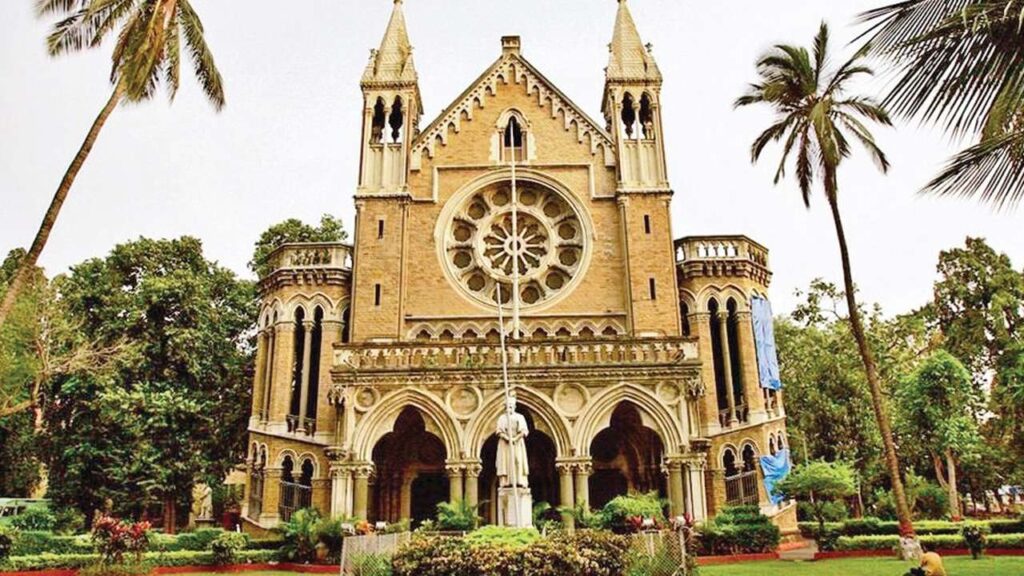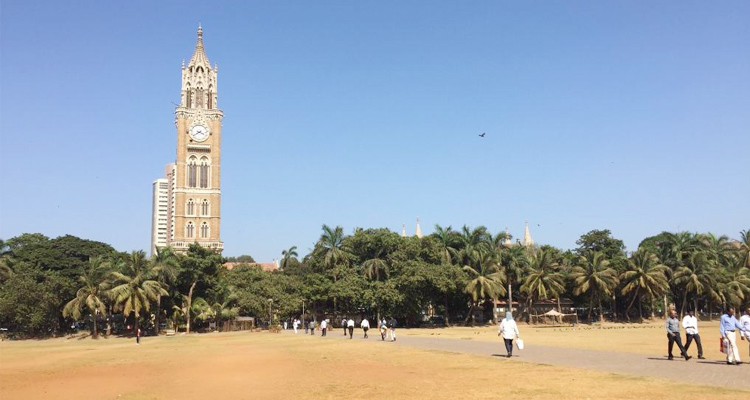
University of Mumbai has given illustrious individuals to society such as Gopal Krishna Gokhale, Homi J. Bhabha, Dadabhai Naoroji, Sardar Vallabhai Patel, Pherozshah Mehta, B.R.Ambedkar, Bal Gangadhar Tilak and many others. It is one of the oldest Universities established in 1857 in Fort area, South Mumbai, India which was earlier known as University of Bombay. It was established in 1857 following the “Wood’s Education Dispatch”. Sir Charles Wood, the President of the Board of Control of the British East India Company, sent a formal communication to Lord Dalhousie, the then Governor-General of India, suggesting a large shift to English language use within India. The salient features of the Wood’s Despatch were
i) the constitution of Separate Department for the Administration of Education
ii) Establishment of Universities in the Presidency Towns (Bombay was one of the presidencies)
iii) Maintenance of existing colleges, high schools and Increasing their Numbers.
The first departments of the University were the Faculty of Arts at Elphinstone College in 1835 and concurrently the Faculty of Medicine started at Grant Medical College famously known as J.J. Hospital in 1845. Both colleges existed before the university was founded. Both Elphinstone and Grant Medical College relented their degree-granting privileges to the University. The first degrees awarded in 1862 were Bachelor of Arts and Licentiate in Medicine. Medical schools such as Sindh Medical and Hyderabad Medical School were affiliated to this majestic University then.
It is worth noting that Cornelia Sorabji was a student of this University in 1888, who later studied law at Somerville College becoming Oxford’s first female law student and India’s first female advocate.
Till 1904, the university used to only conduct examinations, award affiliations to colleges, develop syllabuses, and provide guidelines for colleges developing curricula. Teaching departments, research disciplines, and post-graduate courses were introduced from 1904, and several additional departments were established. After India got independence in 1947, the functions and powers of the university were reorganized under The Bombay University Act of 1953. The name of the university was changed from University of Bombay to University of Mumbai in 1996.
Today, it’s jurisdiction extends over 7 districts: Mumbai City district, Mumbai Suburban district, Palghar, Raigad, Ratnagiri, Sindhudurg and Thane. In 1949, student enrolment was 42,272 with 80 affiliated colleges. By 1975, these numbers had grown to 156,190 and 114 respectively. It further rose to 2.6 lakh in 2021-22.
This 165 years old University is truly regal and standing tall. It has nurtured the style originated in England – the Gothic Revival style building designed by Sir George Gilbert Scott, who incidentally never visited Bombay and worked from London. Imagine the mastery of this great architect who visualized a University building and got it built so aesthetically.

The University boasts of one of the most beautiful clock towers modelled after the Big Ben in London, this tower stands at a height of 85 mts with 5 storeys, designed by Sir George Gilbert Scott, the tower got completed in 1878. The architecture is a fusion of Venetian and Gothic styles and the interiors are decorated with some of the finest stained glasses. Half the cost of the building was met by Premchand Raichand, a prosperous broker on the condition that the tower would be named after his mother Rajabai. After some recent suicide attempts that were made at this place, the tower now remains closed for public. However, the structure is as beautiful on the outside as it is from the inside.
The Convocation famously known as Cowasji Jehangir Convocation Hall named after the Parsi philanthropist Cowasji Jehangir Readymoney had funded the construction. It is part of the University complex recognized as a UNESCO World Heritage Site. It was built between 1869 and 1874, again designed by George William Scott. The library stands separate to the Convocation Hall. It has a corner staircase that towers with spiralling arcades. It’s part Venetian in style with sharply pointed spires and intricate stained-glass windows. The front of the library has stone columns supporting a porch. The brickwork is red, as with many of Scott’s buildings. In August, 1864, Premchand Raichand donated Rs.2 lakhs to the University towards the construction of university library. Raichand wanted the library to look fabulous and he wanted the library to become a storehouse for variety of books for many generations to come.

One fact which is little-known about the University and that is George Scott’s original plans for the building was far too expensive. Two British architects, Walter Paris and George Twigg-Molesey were appointed to reduce them. Initially Scott was unaware of it. The two men team managed to keep much of Scott’s design intact, although the original plan was far outstanding and would now be considered Scott’s most magnificent university building.
Mumbai University is known for first of its kind educational practice. Currently the University has 56 Departments, 12 specialized Centres, 781 Affiliated Colleges, 2 main Campuses, 2 sub-Campuses, 2 Model Colleges, and the ‘School of Engineering and Applied Sciences’ at Kalyan as the University’s own Engineering College.
I have been a Professor of Management Studies associated with few Management Institutions affiliated to University of Mumbai. I visit the Fort campus regularly. The campus is well maintained and has a good academic vibrancy. I remember taking my D.Litt in Management Studies degree in 2008 convocation in Cowasji Jehangir Hall in presence of the then Chief Justice of Mumbai High Court Justice Swatanter Kumar as Chief Guest, Dr. Vijay Khole – Vice Chancellor and Dr. Arun Sawant as Pro-Vice Chancellor .…I get goosebumps and feel nostalgic about this experience of my life. I connect with the majestic University Fort Campus as some meetings in VC’s chamber, in discussion room attached to VC’s chamber, visit to affiliation office, CONCOL office, thesis section etc. I feel connected to the Mumbai University over the past 24 years. This University has stood tall for the past 165 years, it has grown with some of the best students, teachers, administrators, Vice Chancellors, Chancellors.
A University campus is cluster of departments, lounges and buildings at heart, that creates unforgettable educational experiences for countless learners. The campus design symbolizes vision, mission and philosophies of the University.













































